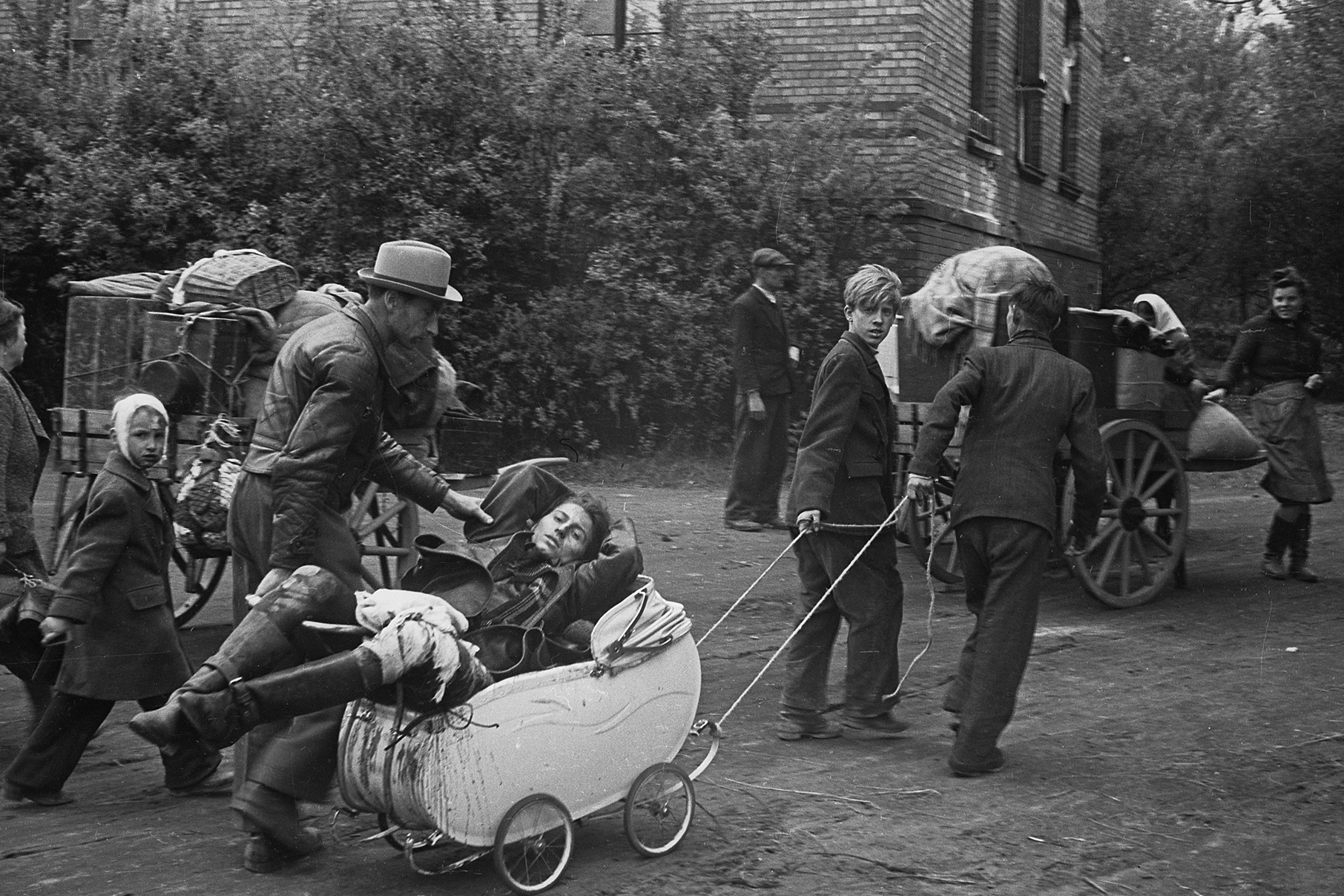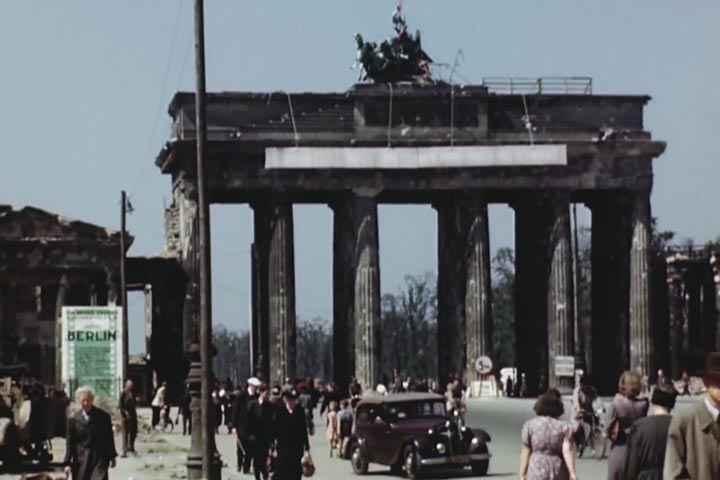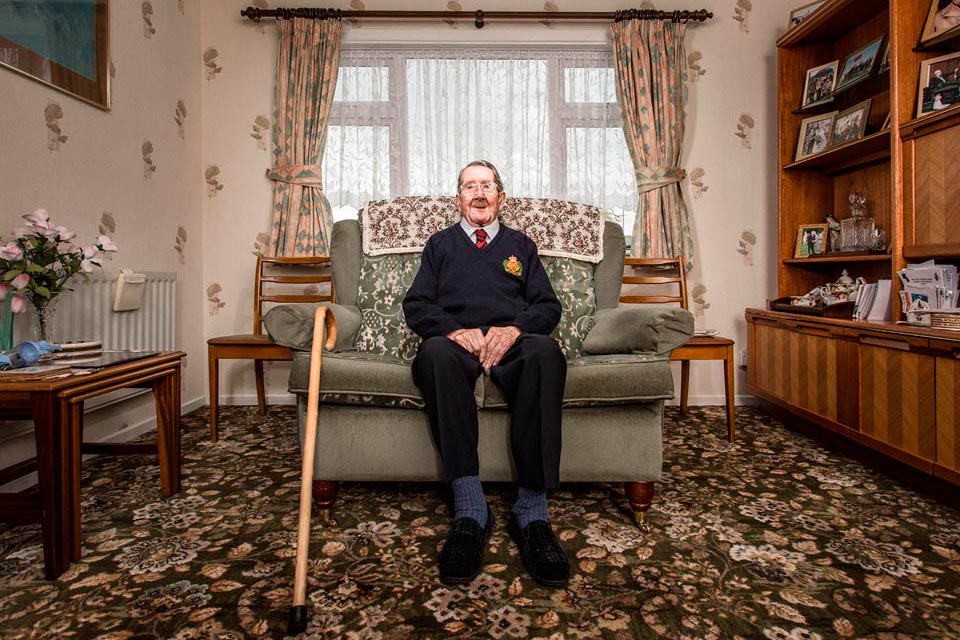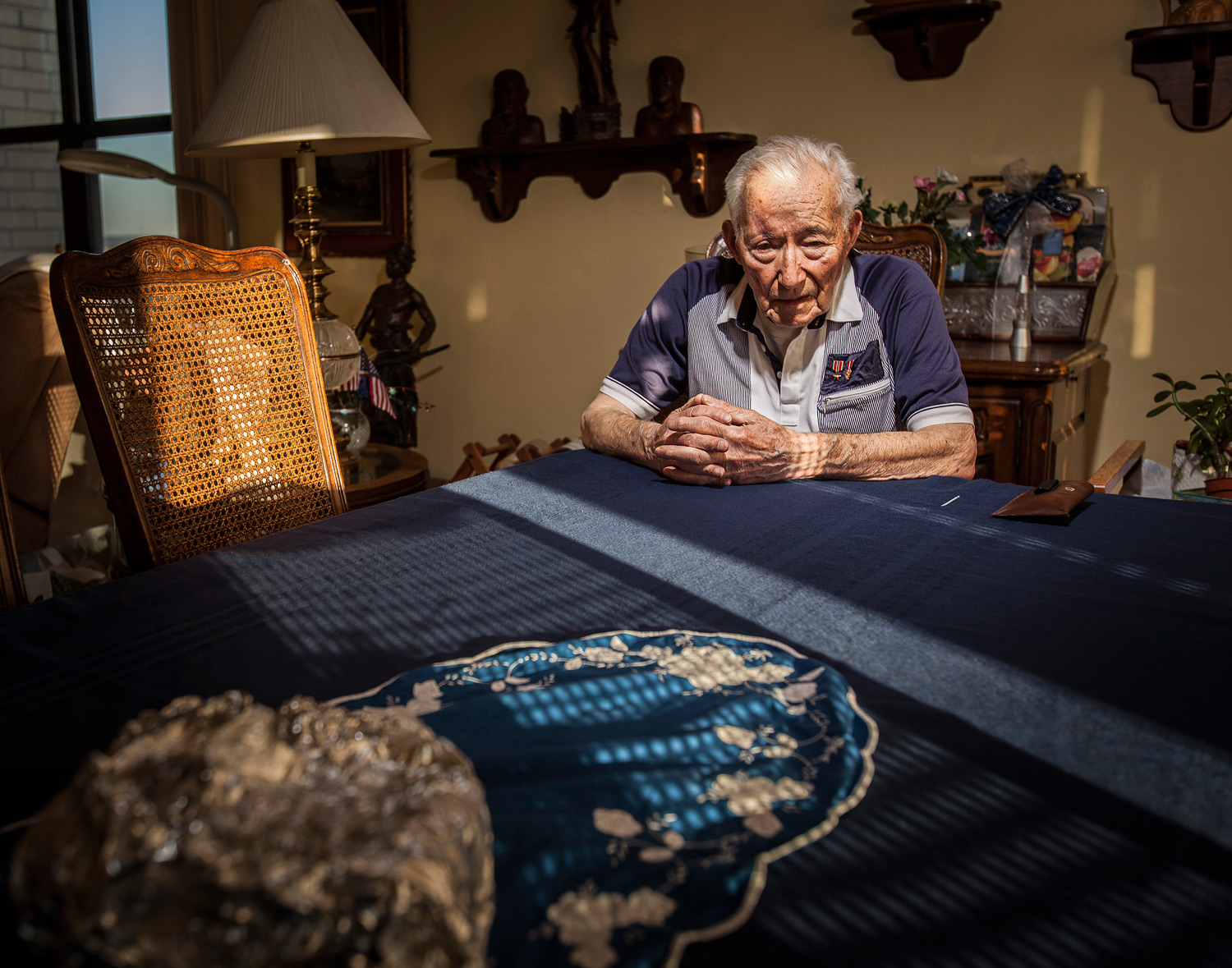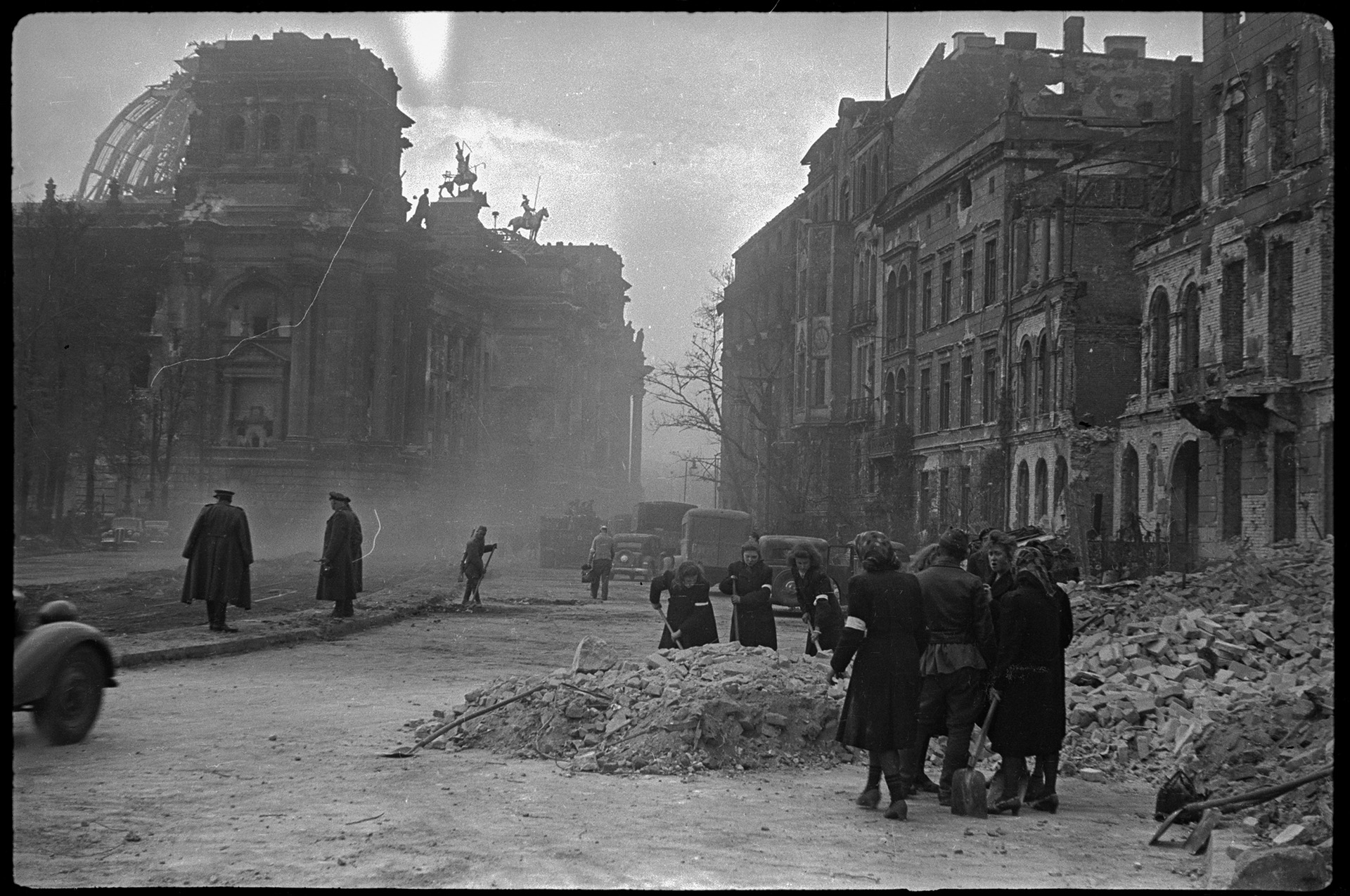
Vae Victis: The Ruins of Berlin in Valery Faminsky’s Photographs
Berlin looks monumental in ruin. It is a huge and gloomy monument to the insanity of politics, as well as a reminder that a gentleman’s war is impossible.
When Adolf Hitler ordered the bombing of Great Britain in the summer of 1940, he was still hoping to coerce Churchill to negotiation. That’s why German aviation planned attacks on military and industrial objects, and pilots were warned they would be punished if they struck living quarters, even accidentally.
The technological limitations did not allow for fulfilling this requirement. On the August 24, several Luftwaffe planes got lost and killed nine people in central London. On the next night, 25 crews of the Royal Air Force were in the sky over Berlin. During the inaccurate bombing of Tempelhof airport and Siemens factory, they hit civilian homes.
Eye for an eye. Since then, both sides did not try to avoid collateral damage when planning air raids, and even aimed for it. The strategic goal was now to suppress the enemy’s will by carpet bombing.
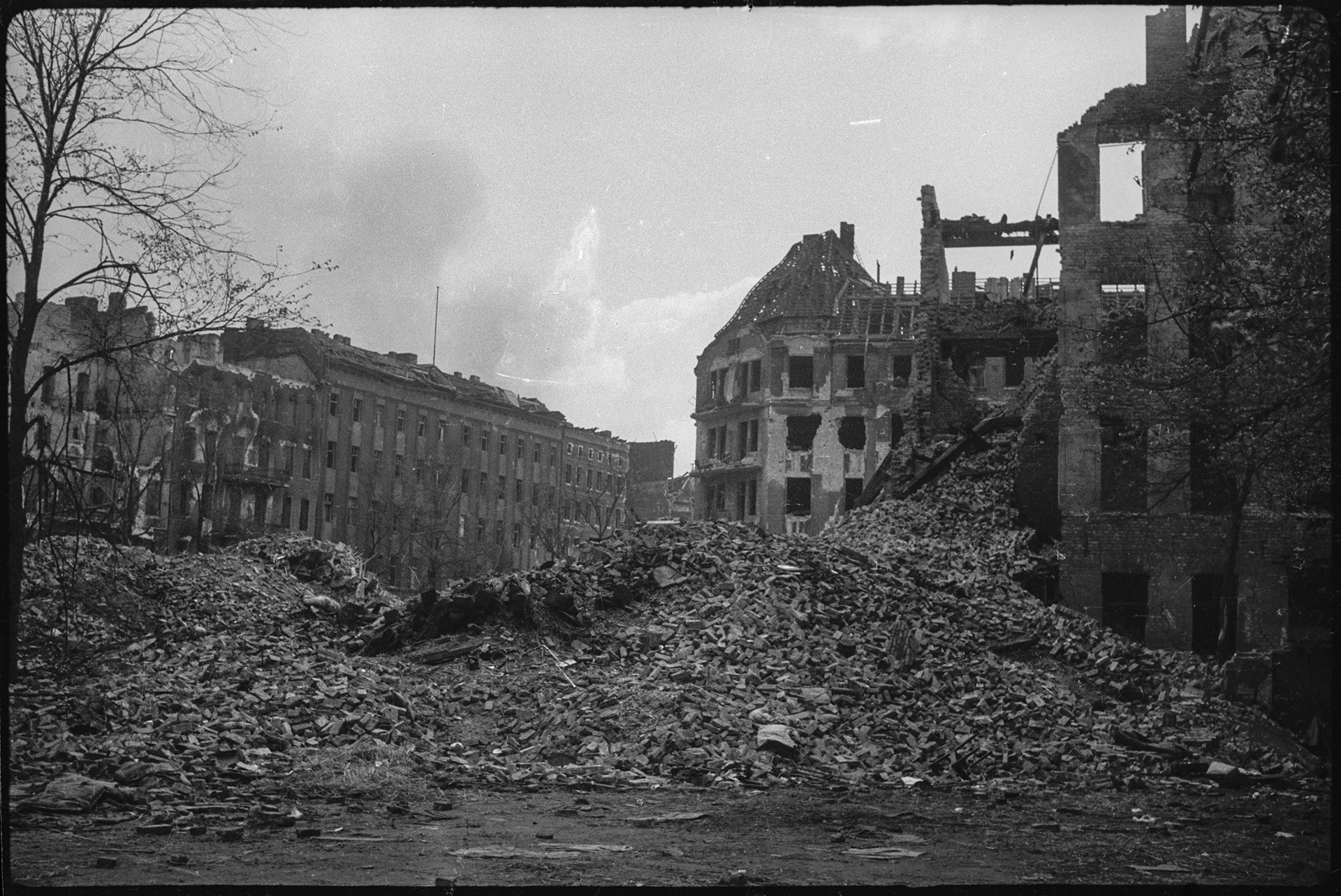
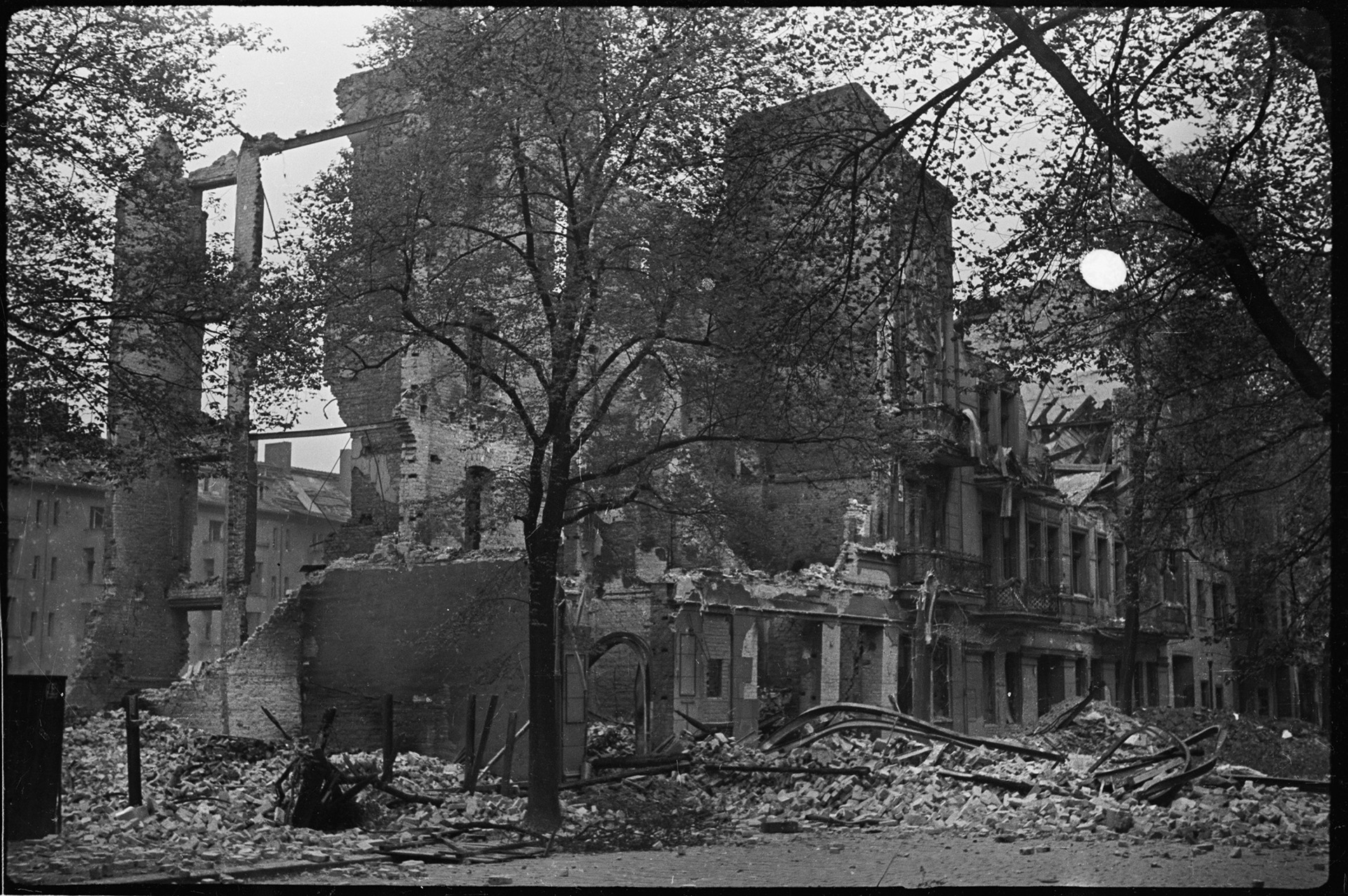
By 1943, the US joined Britain in bombing Berlin, the next year came the French. By the end of the war, the Western allies dumped over 68,500 tons of explosives on the German capital. The Red Army added another 40,000 of bombs and shells during the assault.
Palaces, museums, places of worship, historical and cultural monuments were destroyed along with the residential homes, government buildings, and military objects. However, the most horrible photographs of post-war Berlin were taken in the city center, where 80% of buildings were destroyed. The total for all districts of the city was 33% — less than in other large German cities. Bohn was 85% destroyed, Hannover — 60%, Frankfurt — 52%, Munich — 42%.
The human casualties were also comparatively low, as for WWII. According to the estimates of German historians, airstrikes killed 20,000–30,000 Berliners. The capital was protected by a large square area, a significant distance from the enemy’s airstrips, and a powerful air defense system.
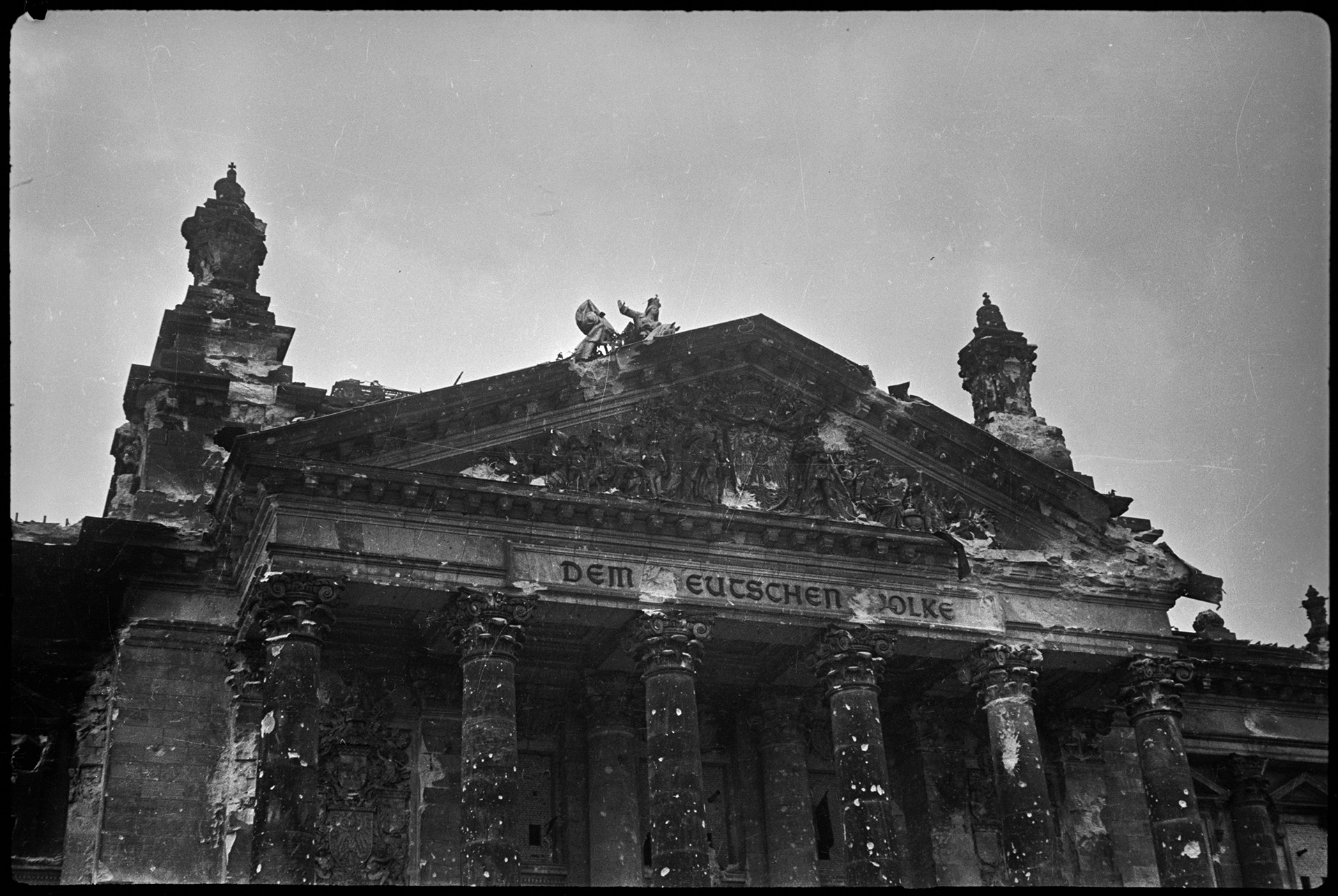
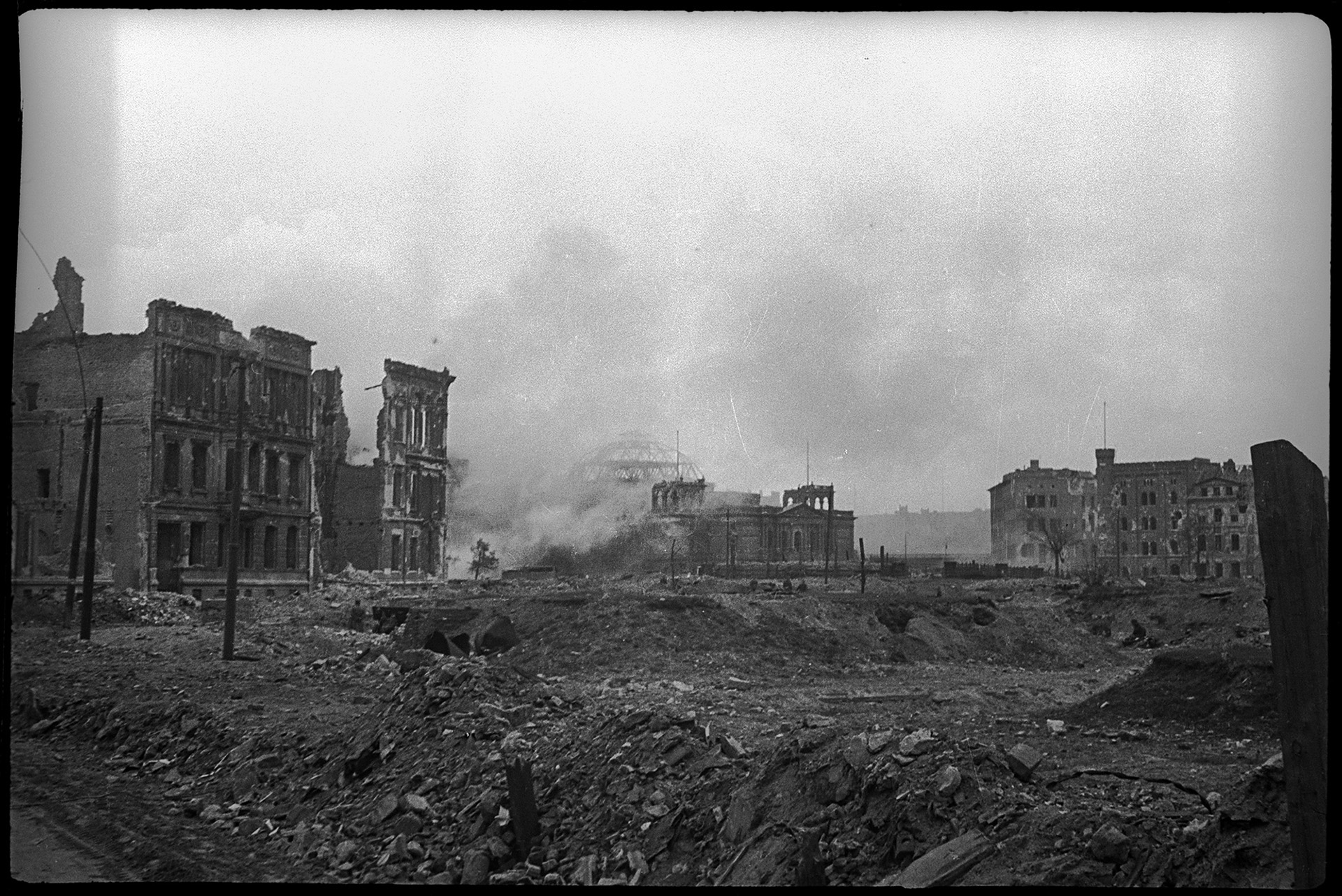
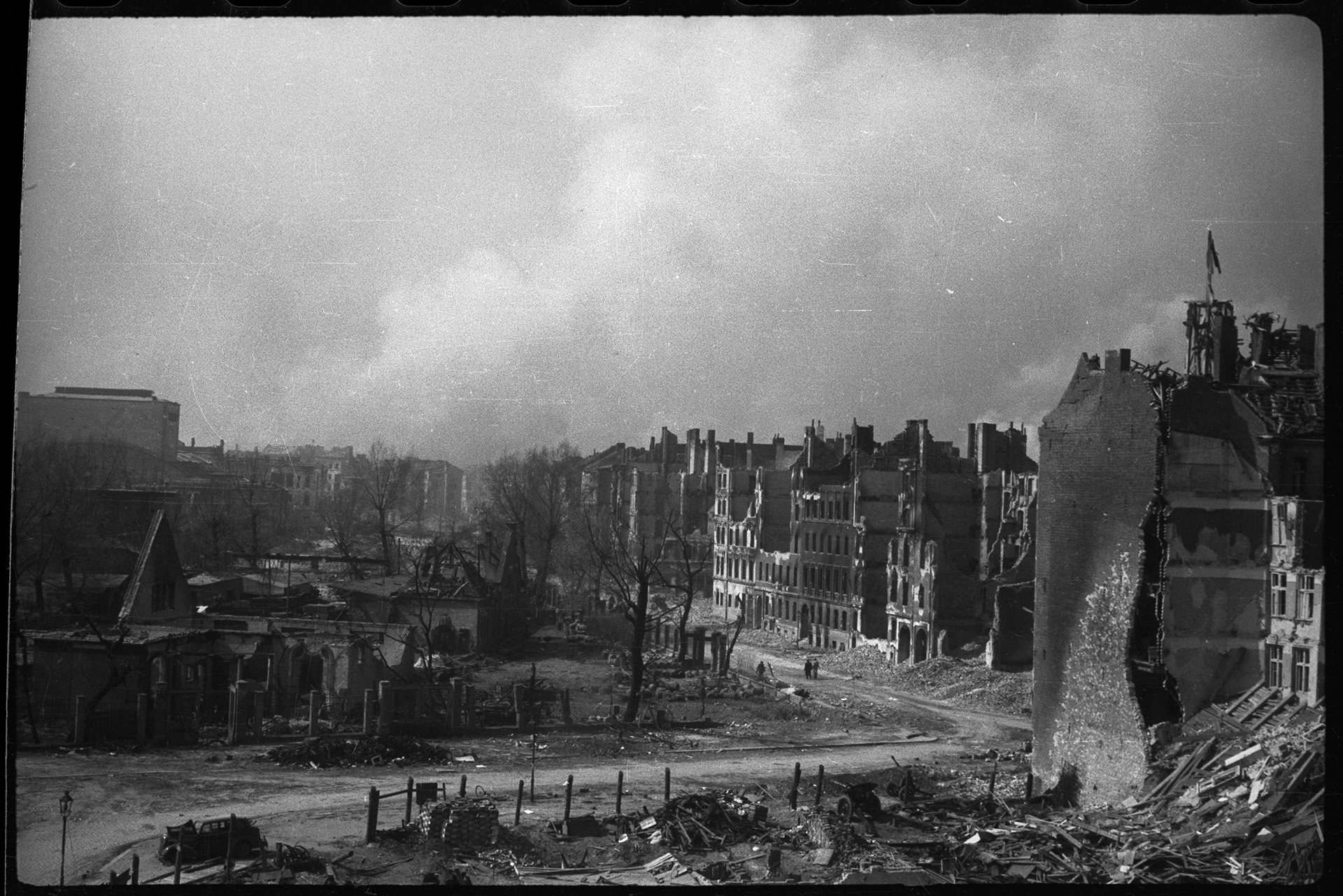
Strategic bombing did not achieve the desired results. Taking into account huge losses — Western allies lost 33,700 planes and 160,000 pilots over Europe — some historians claim that the air campaign was a failure.
German industry was seriously damaged, but the production of military goods was growing in Germany till mid-1944. Although after the war 91% of surveyed Germans said that the bombardments were the most difficult for them, the country fought until the fall of Berlin and the capitulation of the government.
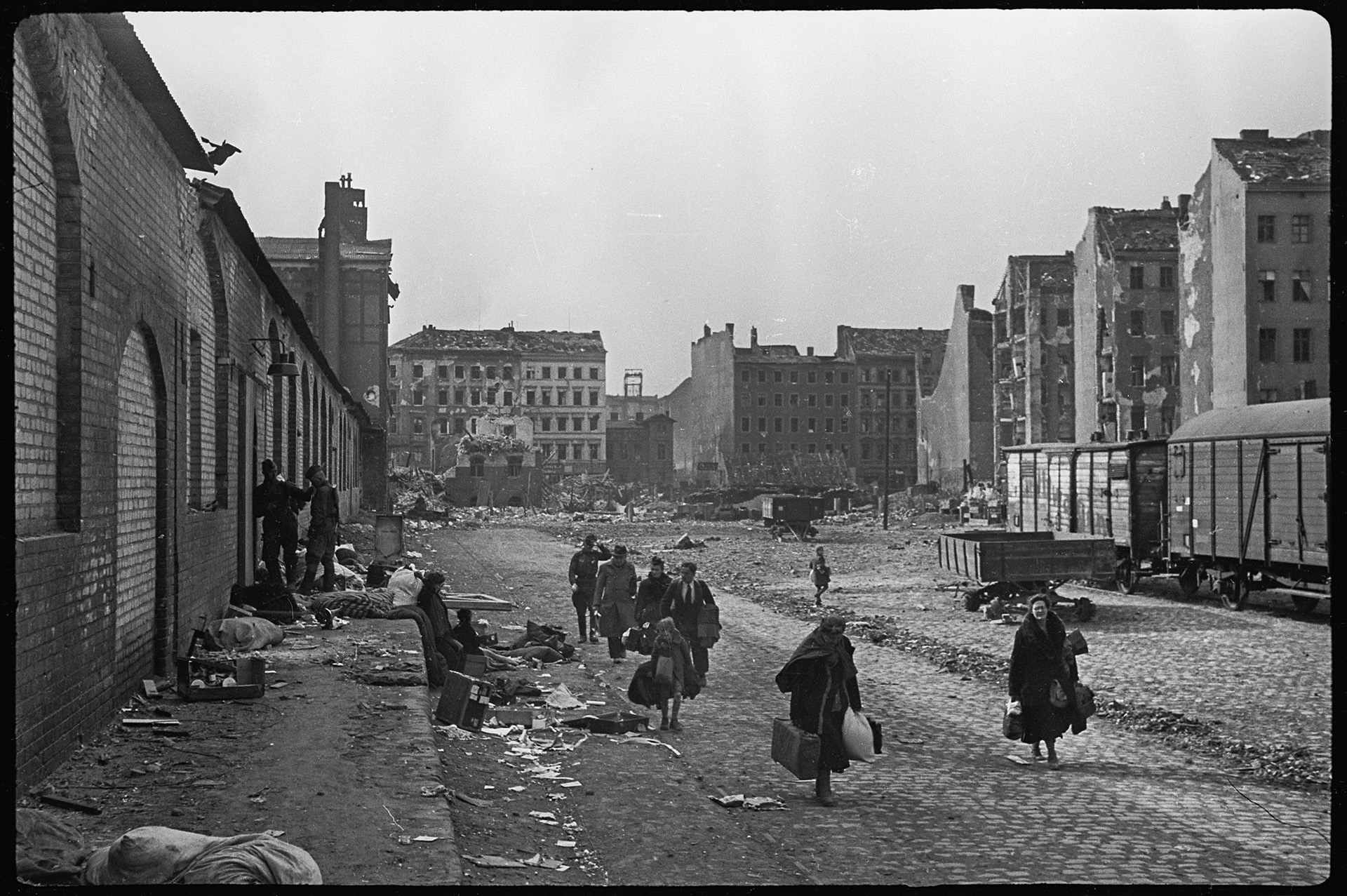
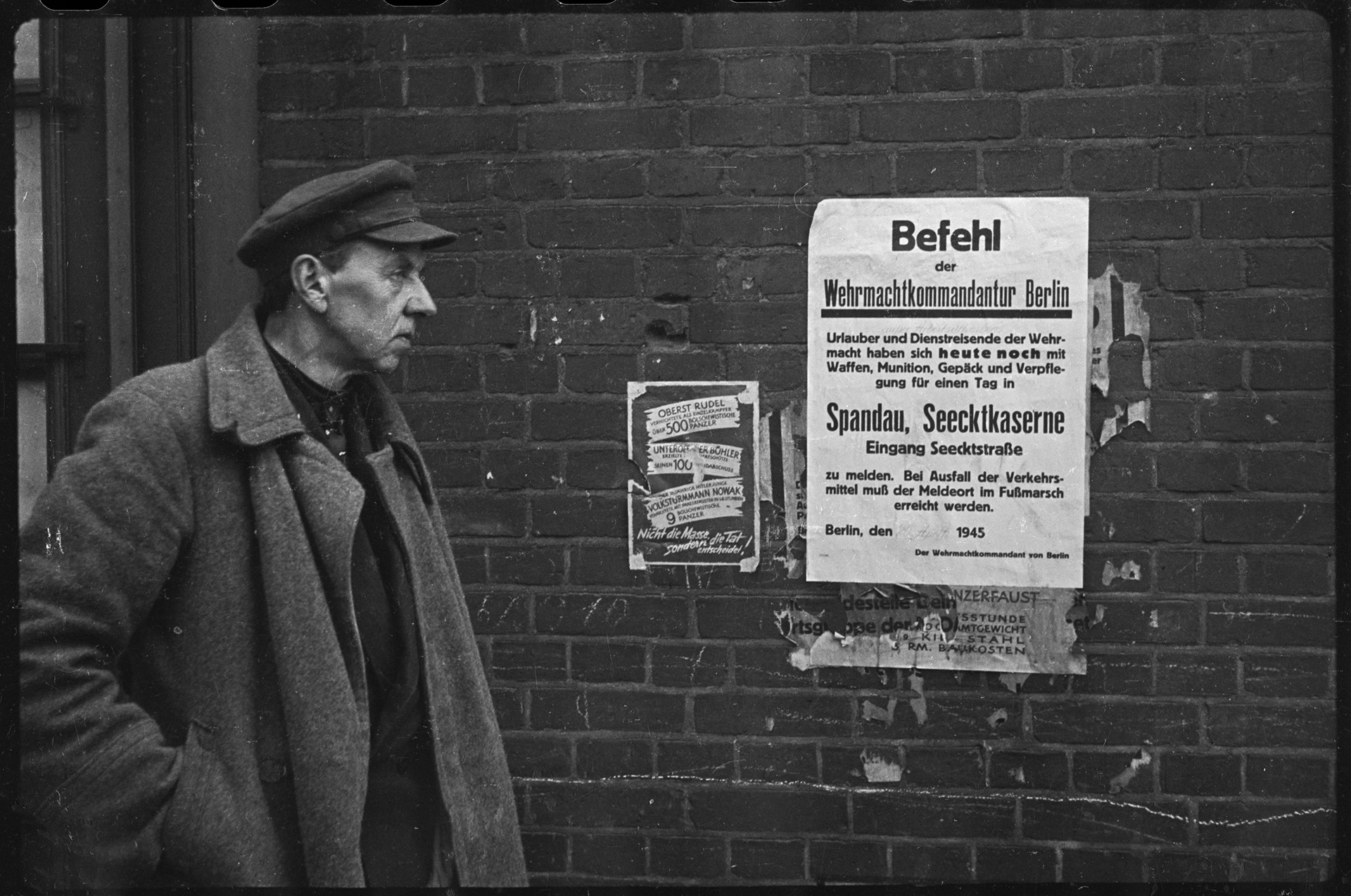
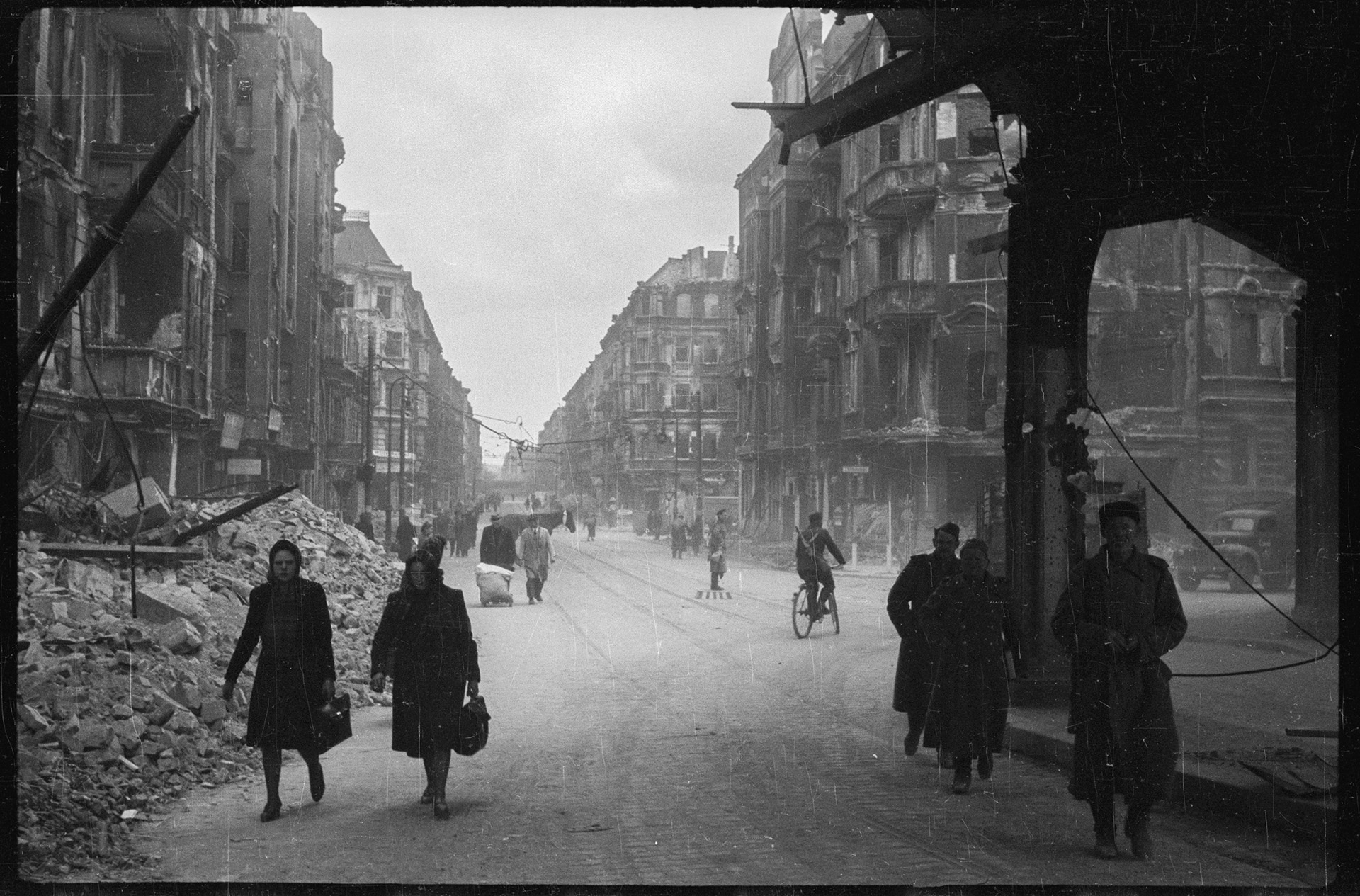
Before the war, the population of Berlin and its suburbs reached 4,700,000 people. In 1943, the German government decided to evacuate people who were not involved in production and government away from the bombardments. Women, children, and the elderly were taken from Berlin to the countryside. Many of them returned home secretly, and soon the city was also flooded by refugees from East Germany. The population grew — and then decreased again, when people were fleeing to the West as the Red Army got closer.
By May, when Nazi Germany capitulated, there were 1,700,00 people in the capital. The main problem for the Soviet administration was to save people from starving to death. In May, they introduced a five-level food rationing system. The most food was given to scientists and artists, the least — to the elderly and housewives. Their rations were called ‘Friedhofskarte’, a ‘ticket to the cemetery’. At the time, an average Berliner weighed 6–9 kilograms less than the normal average weight.
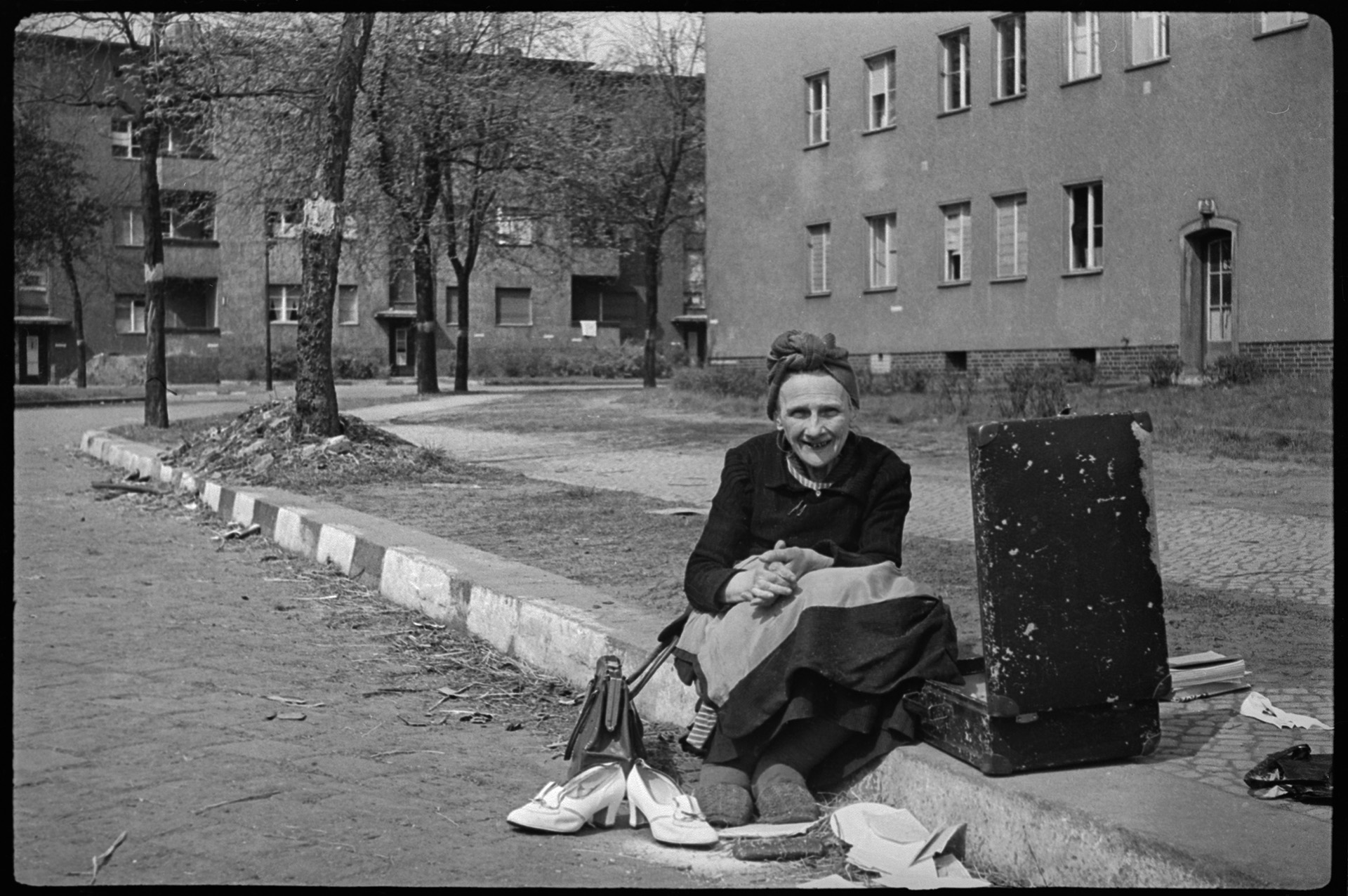
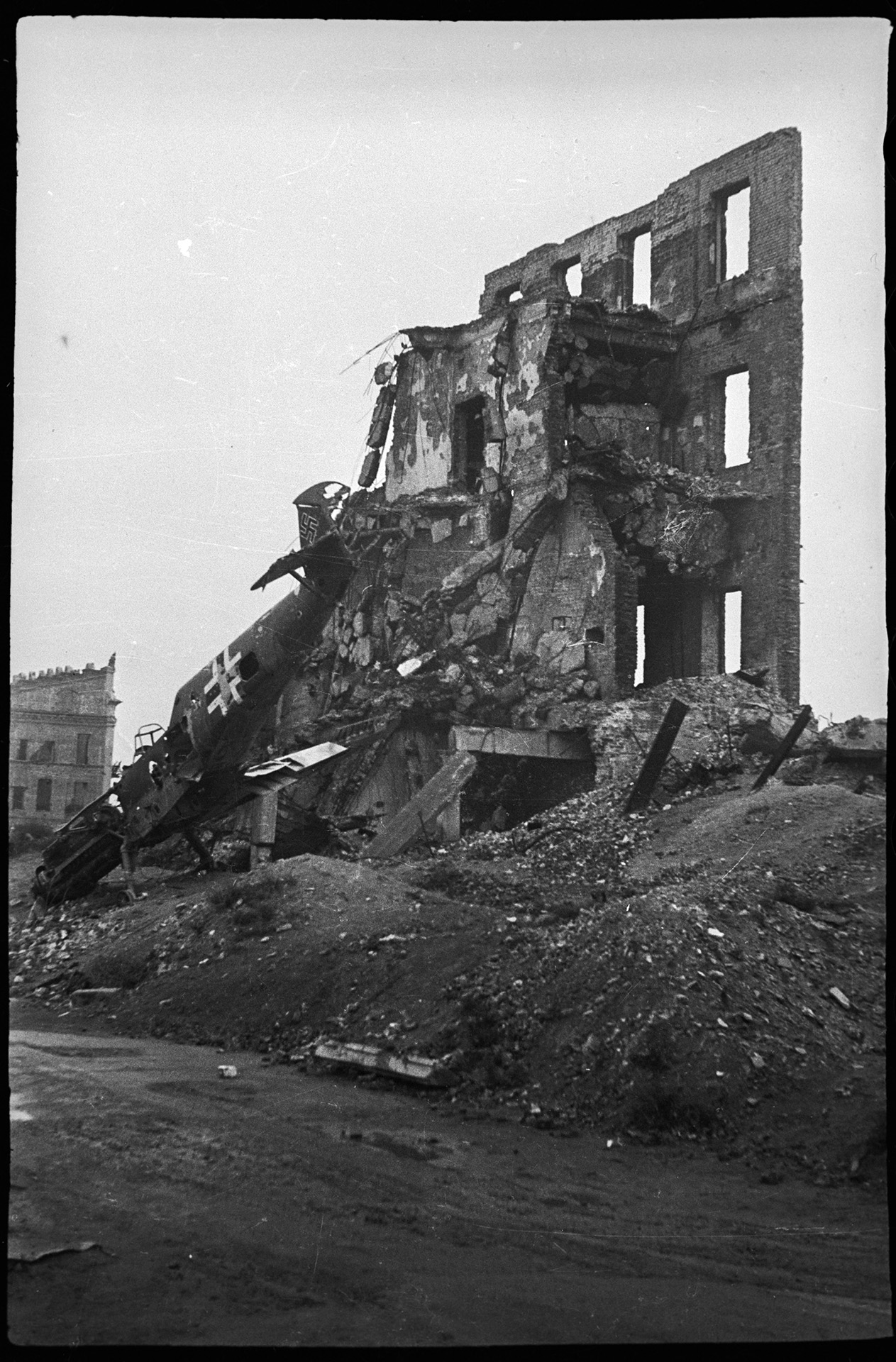
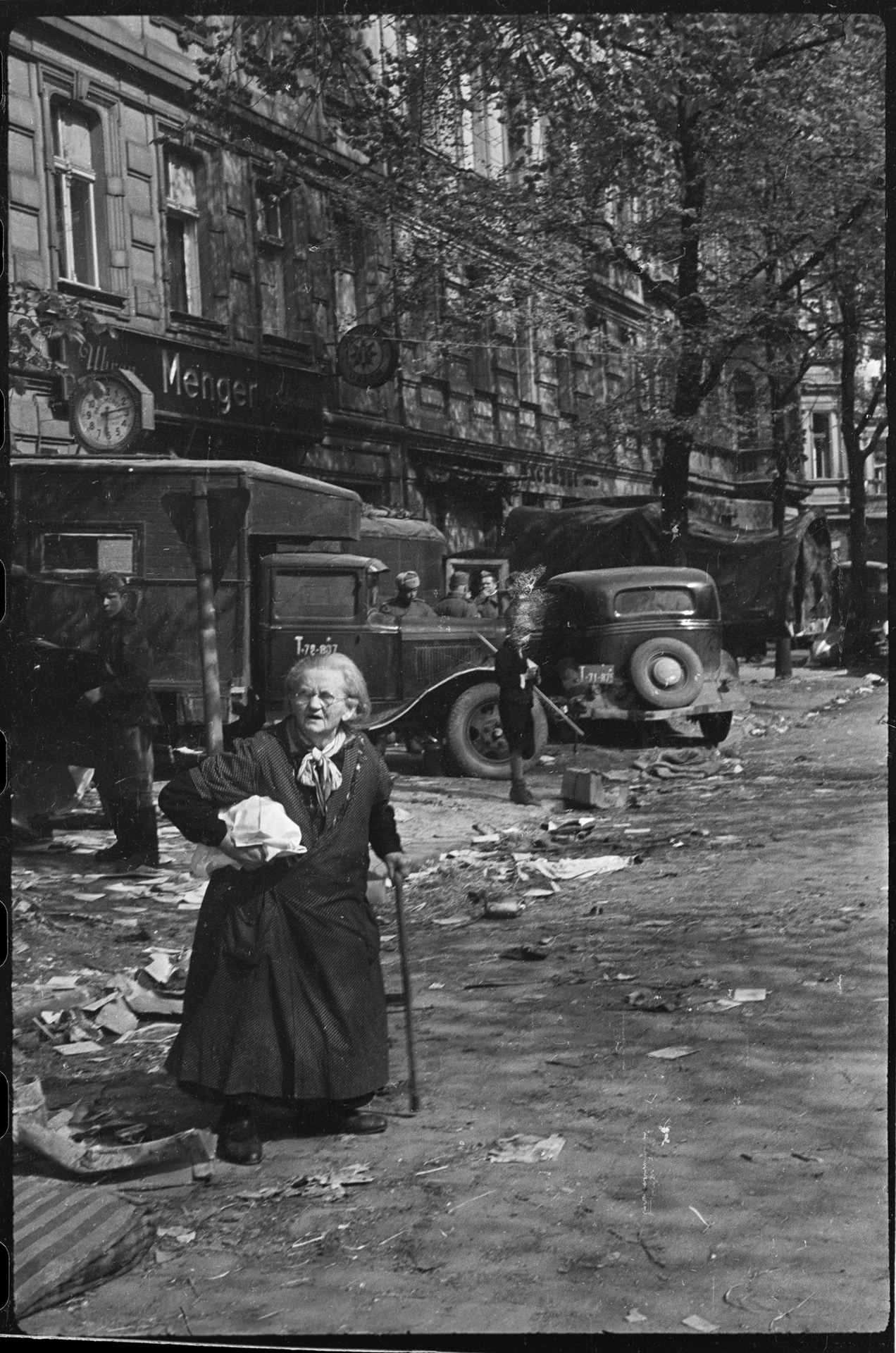
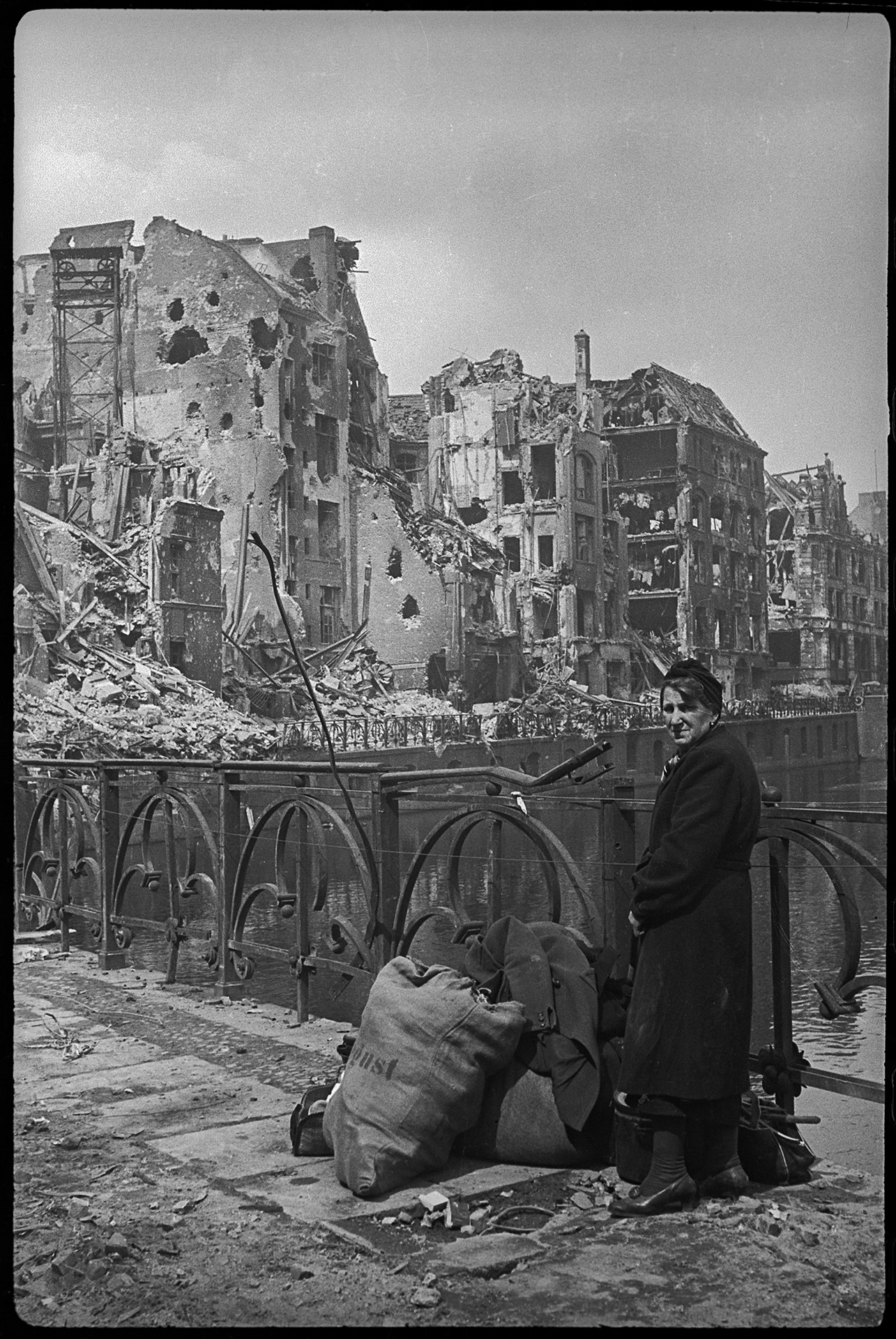
For every living Berliner, there were 30m³ of garbage and debris by the end of the war. The Soviet administration thought it would take 12 years to fully clear the city. Three weeks after Berlin was liberated, 60,000 women aged between 15 and 65 were drafted to clear the debris. Trümmerfrauen, women of the ruins, received 12 marks a day and, much more importantly, food according to the second level of rationing.
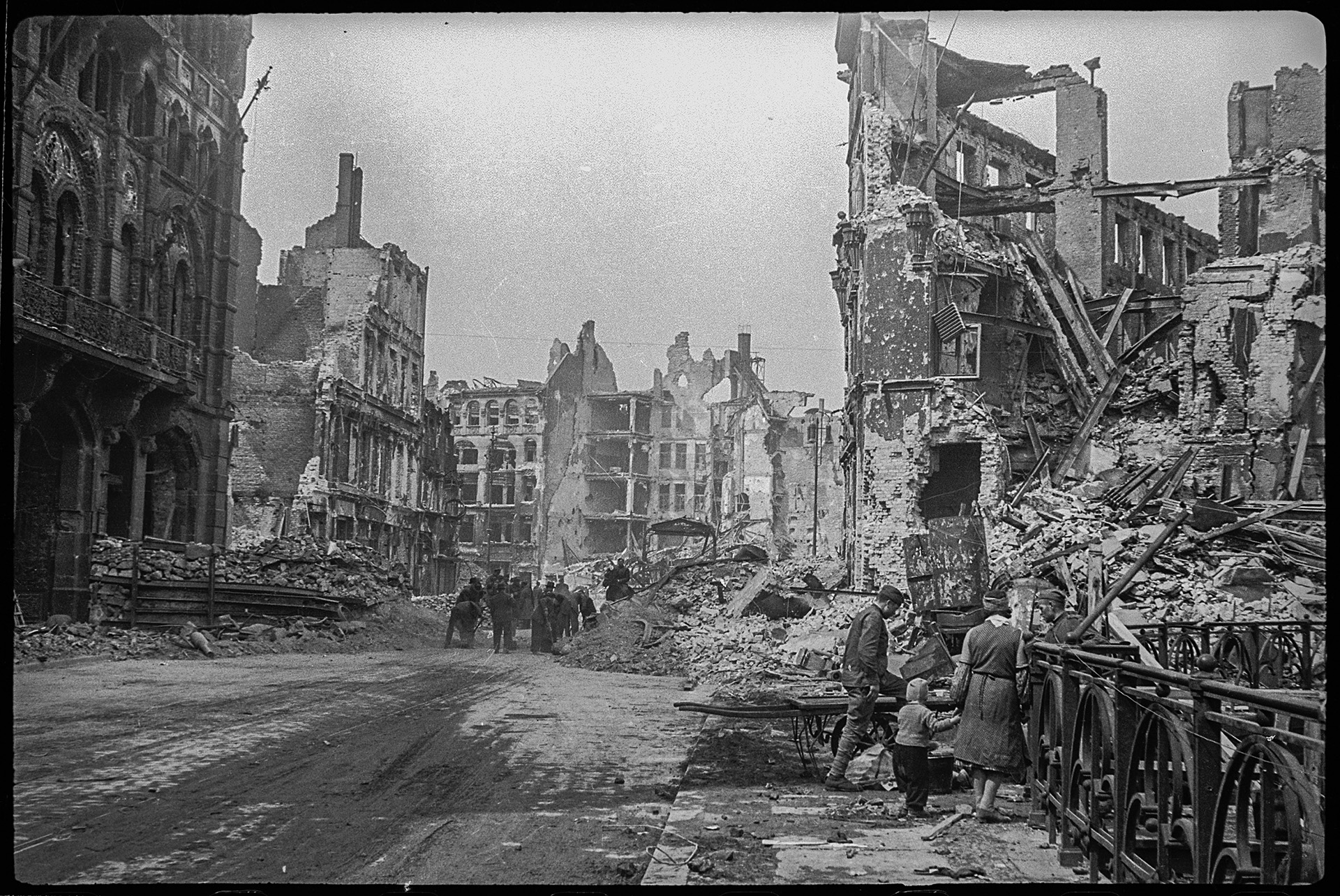
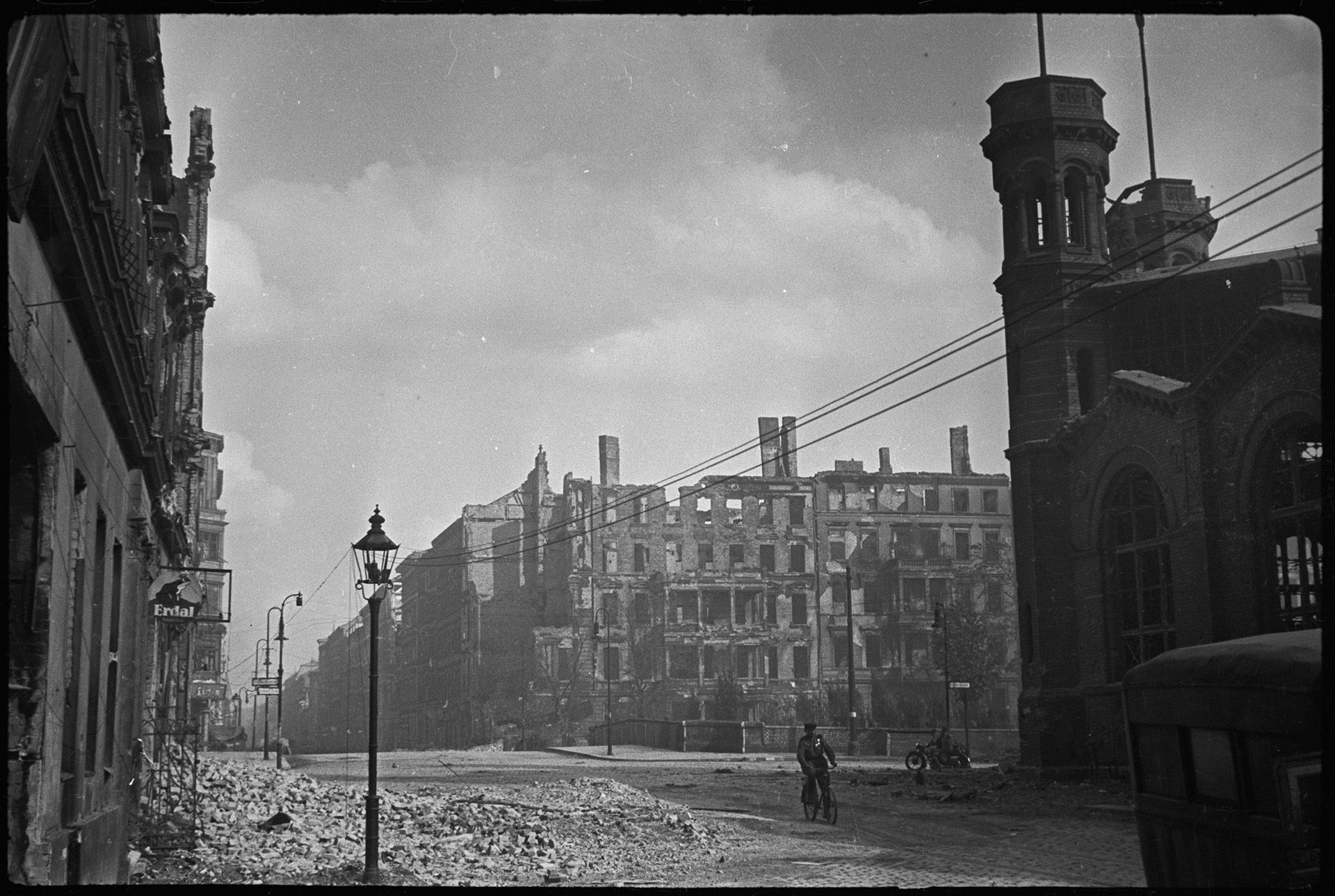
The revival of Germany was both fast and slow. During WWII, the country lost 18% of its resources, but gained plenty — huge military investment into the infrastructure and stimulation of the economy by refugee Germans from other countries. Already in 1950, goods made in Germany were massively exported.
The restoration of the capital, which was divided into the Eastern and Western zones, was still underway in the 1980s. In West Berlin, the destruction of entire districts and the need to re-plan the city encouraged the development of modern architecture. In East Berlin, where the socialist state allocated much less costs to reconstruction, some of the buildings still have bullet holes and shelling damage on them.
The fall of the Berlin Wall prolonged the reconstruction for another three decades. What should Berlin be like — this is still a hot issue. It seems that the citizens enjoy the very process of constant renewal.
Photo: Valery Faminsky, Arthur Bondar’s private collection. Berlin, May 1945.
